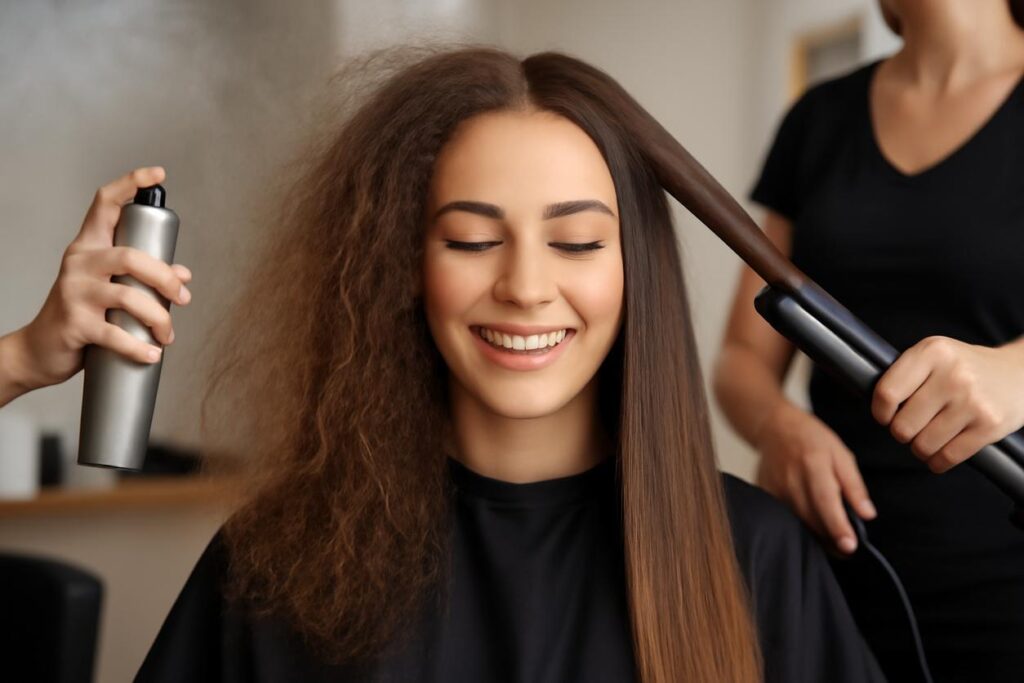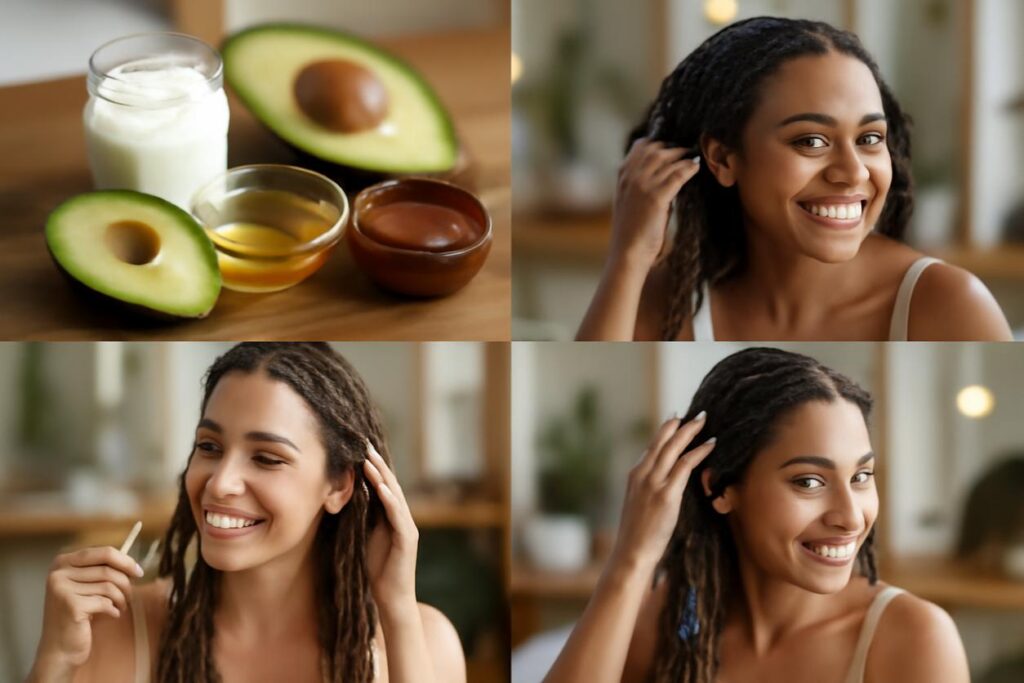The Ultimate Guide to Frizz Control: Your 2025 Blueprint for Smooth, Manageable Hair
Table of Contents
- Quick summary and who this guide is for
- What causes frizz and how hair structure matters
- How to assess your frizz profile at home
- Daily routine blueprint for frizz control
- Product categories that calm frizz without weighing hair
- Heat styling and tool strategies to minimise frizz
- Protective styling and sleep routines
- Simple DIY treatments and when to use them
- Seasonal tweaks for high humidity and dry winter months
- Common mistakes that make frizz worse
- Quick troubleshooting checklist
- FAQ
- 30 day action plan to see measurable improvement
- Sources and further reading
Quick summary and who this guide is for
Welcome to your definitive guide to achieving lasting frizz control. If you find yourself battling a halo of flyaways, unruly strands, or hair that seems to have a mind of its own, you are in the right place. This guide is designed for anyone with frizzy, unmanageable hair who wants to understand the root causes and implement practical, effective strategies for smoother, healthier-looking locks. We will move beyond temporary fixes and provide you with a blueprint for a daily routine, long-term improvements, and seasonal adjustments. Whether your hair is straight, wavy, or curly, this guide will empower you to manage frizz independently and confidently.
What causes frizz and how hair structure matters
At its core, frizz is a cry for moisture. Each strand of your hair is covered by an outer layer called the cuticle, which looks like overlapping shingles on a roof. When your hair is healthy and well-moisturised, these cuticles lie flat and smooth. However, when hair becomes dry or damaged, these cuticles lift and open up. This allows moisture from the surrounding air to penetrate the hair shaft, causing it to swell and appear frizzy. Understanding this fundamental mechanism is the first step toward effective frizz control.
Role of humidity and environmental factors
Humidity is the most well-known trigger for frizz. On a humid day, the amount of moisture in the air is high. Dry, porous hair acts like a sponge, desperately trying to absorb this environmental moisture. As the hair shaft soaks up water, it swells unevenly, disrupting the smooth cuticle layer and resulting in that classic frizzy texture. Conversely, very dry environments can also cause issues by leaching moisture from your hair, leaving it brittle, dehydrated, and prone to static and frizz.
How porosity and texture influence frizz
Hair porosity refers to your hair’s ability to absorb and retain moisture. It is determined by the structure of your hair cuticle.
- Low Porosity: Cuticles are tightly packed and lie flat. This hair type resists moisture but holds it well once absorbed. It is less prone to frizz from humidity but can be weighed down by heavy products.
- High Porosity: Cuticles are raised or have gaps, often due to damage from heat or chemical treatments, or from genetic factors. This hair absorbs moisture quickly but also loses it just as fast, making it highly susceptible to frizz.
Hair texture also plays a significant role. Curly and wavy hair types are naturally more prone to frizz because the bends and curves in the hair shaft prevent natural scalp oils from travelling down the strand, leading to drier ends. The shape of the strand also means the cuticles do not lie as flat as they do on straight hair.
How to assess your frizz profile at home
Understanding your hair’s porosity is crucial for a successful frizz control strategy. You can perform a simple test at home:
The Spray Bottle Test:
- Start with clean, dry hair with no product in it.
- Isolate a small section of your hair.
- Lightly mist the section with water from a spray bottle.
- Observe what happens:
- If the water beads up on the surface before slowly sinking in, you likely have low porosity hair.
- If the water absorbs into your hair fairly quickly, you likely have medium (or normal) porosity hair.
- If your hair soaks up the water almost instantly, you likely have high porosity hair.
Knowing this helps you choose the right products and techniques. High porosity hair needs products that seal the cuticle, while low porosity hair needs lightweight products that will not cause build-up.
Daily routine blueprint for frizz control
A consistent routine is the foundation of managing frizz. The goal is to infuse moisture, seal the cuticle, and protect the hair from environmental aggressors.
Cleansing and water temperature guidance
How you wash your hair sets the stage for everything that follows. Over-cleansing can strip your hair of its natural, protective oils, leading to dryness and frizz.
- Choose Sulfate-Free Shampoos: Sulfates are harsh detergents that create a rich lather but can strip moisture. Opt for gentle, sulfate-free formulas.
- Wash Less Frequently: If possible, reduce washing to 2-3 times per week.
- Use Lukewarm Water: Hot water can lift the hair cuticle, inviting frizz. Wash and rinse your hair with lukewarm water, and if you can tolerate it, finish with a cool rinse to help seal the cuticle shut.
Conditioning and detangling without disruption
Conditioner is non-negotiable for frizz control. It replenishes moisture and smooths the hair’s cuticle layer.
- Never Skip Conditioner: Apply a generous amount of conditioner, focusing on the mid-lengths and ends where hair is the oldest and driest.
- Detangle with Conditioner: The best time to detangle is when your hair is coated in conditioner. Use your fingers or a wide-tooth comb to gently work through knots, starting from the ends and moving up to the roots. This prevents breakage and respects your hair’s natural pattern.
Leave in steps and styling order
What you do after washing is critical for locking in moisture and defining your style without frizz. The order in which you apply products matters.
- Do Not Use a Terrycloth Towel: Vigorously rubbing your hair with a standard cotton towel creates friction and roughs up the cuticle. Instead, gently squeeze out excess water with a microfibre towel or an old t-shirt.
- Apply Products to Wet Hair: Apply your leave-in conditioner, cream, or mousse while your hair is still wet. This helps to lock in hydration and form a protective barrier.
- Layer Strategically: A popular method is the LOC (Leave-in, Oil, Cream) or LCO (Leave-in, Cream, Oil) method. First, apply a water-based leave-in conditioner for hydration. Then, layer a cream to define and moisturise. Finally, seal it all in with a lightweight oil to close the cuticle and prevent moisture from escaping.
Product categories that calm frizz without weighing hair
The key to product selection is understanding ingredients. For effective frizz control, you need a balance of hydration and sealing properties.
Emulsifiers and lightweight oils to consider
Oils are excellent for sealing the hair cuticle and adding shine. However, heavy oils can weigh down fine hair. Look for lightweight, non-greasy options that mimic the scalp’s natural sebum.
- Argan Oil: Rich in fatty acids and vitamin E, it nourishes and protects without being heavy.
- Jojoba Oil: Its molecular structure is very similar to natural hair oil, making it easily absorbed.
- Grapeseed Oil: An extremely lightweight oil that is great for sealing and adding shine to even the finest hair types.
Humectant use and when to avoid them
Humectants are ingredients (like glycerin, honey, and panthenol) that attract water molecules from the environment into your hair. This can be fantastic for hydration. However, their effectiveness is highly dependent on the weather.
- When to Use Them: In moderately humid or dry conditions, humectants can help pull moisture into the hair, keeping it hydrated.
- When to Avoid Them: In very high humidity, they can pull too much moisture from the air, causing the hair shaft to swell and frizz. In very dry conditions (low humidity), they can pull moisture out of your hair and release it into the air, making your hair even drier. Check the dew point; if it is extremely high or low, consider products with anti-humectant properties, like certain silicones or natural oils.
Heat styling and tool strategies to minimise frizz
Heat is a major contributor to cuticle damage and frizz. If you must use heat, do it strategically to minimise damage.
- Always Use a Heat Protectant: This is your number one rule. A good heat protectant creates a barrier between your hair and the tool, reducing damage.
- Invest in Ionic and Ceramic Tools: Ionic dryers emit negative ions that help break down water molecules faster, reducing drying time and heat exposure. They also help seal the cuticle. Ceramic tools distribute heat more evenly, preventing hot spots that can scorch your hair.
- Use the Lowest Effective Temperature: You do not always need the highest heat setting. Find the lowest temperature that effectively styles your hair.
- Point the Nozzle Down: When blow-drying, always point the nozzle of the dryer down the hair shaft, from root to tip. This encourages the cuticles to lie flat.
Protective styling and sleep routines
Your frizz control efforts should not stop when you go to bed. Protecting your hair overnight can make a huge difference.
- Switch to a Silk or Satin Pillowcase: Cotton pillowcases absorb moisture from your hair and cause friction, leading to frizz and breakage. The smooth surface of silk or satin allows your hair to glide across it.
- Wear a Silk/Satin Bonnet or Scarf: For even better protection, especially for curly and coily hair, sleeping in a bonnet or wrapping your hair in a scarf preserves your style and minimises friction.
- Protective Hairstyles: Putting your hair in a loose braid, a high bun (a “pineapple”), or twists before bed can prevent tangling and frizz.
Simple DIY treatments and when to use them
You do not need expensive treatments for effective frizz control. Simple ingredients from your kitchen can provide a moisture or protein boost.
- Apple Cider Vinegar (ACV) Rinse (Use 1-2 times per month): Mix one part ACV with four parts water. After shampooing and conditioning, pour the mixture over your hair. Let it sit for a minute, then rinse with cool water. The acidity of the ACV helps to flatten and seal the hair cuticle, increasing shine and reducing frizz.
- Avocado and Olive Oil Mask (Use as needed for deep moisture): Mash half a ripe avocado and mix with two tablespoons of olive oil. Apply to clean, damp hair, focusing on the ends. Leave it on for 20-30 minutes before rinsing thoroughly. This provides intense hydration and fatty acids to nourish the hair.
Seasonal tweaks for high humidity and dry winter months
Your hair’s needs change with the seasons. Adjusting your routine is key to year-round frizz control.
- Summer/High Humidity: This is when frizz is at its peak. Focus on products with sealing ingredients and anti-humectants (like silicones or certain plant-based oils) to block out excess environmental moisture. Lightweight gels can help lock your style in place.
- Winter/Dry Months: Cold, dry air can strip moisture from your hair. Focus on deep conditioning treatments, leave-in conditioners, and layering moisturising creams and oils to prevent your hair from becoming dehydrated and brittle. This is a good time to use products with humectants.
Common mistakes that make frizz worse
Sometimes, frizz is caused by simple habits we are not even aware of. Avoiding these common mistakes can dramatically improve your hair’s texture.
- Roughly Towel-Drying Hair: The friction from a terrycloth towel is a primary cause of frizz. Always blot or scrunch gently with a microfibre towel or t-shirt.
- Brushing Dry, Curly Hair: This disrupts the curl pattern and separates the hair strands, creating a halo of frizz. Only detangle curly hair when it is wet and full of conditioner.
- Touching Your Hair Too Much: Constantly running your hands through your hair, especially while it is drying, can disrupt the cuticle and transfer oils, leading to frizz.
- Using Products with Drying Alcohols: Check your ingredient lists for short-chain alcohols like alcohol denat, which can be very drying.
Quick troubleshooting checklist
Suddenly experiencing more frizz than usual? Run through this quick checklist:
- Check the Weather: Has the dew point or humidity changed dramatically?
- Review Your Products: Did you introduce a new product that might not be right for your hair type?
- Assess Your Routine: Did you skip a deep conditioner or use hot water?
- Consider Your Environment: Have you been in a chlorinated pool or salt water?
- Examine Your Hair: Does your hair feel unusually dry? It might be time for a deep conditioning treatment or a trim to remove split ends.
FAQ
Is frizz a sign of unhealthy hair?
Not necessarily. While frizz is often associated with dryness or damage, some hair types, especially curly and wavy textures, are naturally more prone to it. However, excessive frizz can indicate a need for more moisture or a gentler hair care routine.
Can I ever completely eliminate frizz?
Eliminating frizz entirely is an unrealistic goal, as it is a natural characteristic of hair. The goal of frizz control is not eradication, but management. The aim is to have healthy, hydrated hair that is minimally affected by environmental factors, resulting in smoother, more defined strands.
Are silicones bad for frizzy hair?
Silicones get a bad reputation, but they can be very effective for frizz. They work by creating a waterproof coating around the hair shaft, which seals the cuticle and blocks humidity. The key is to use water-soluble silicones (like those ending in -cone with a “PEG-” prefix) that wash out easily and avoid build-up, or to use a clarifying shampoo periodically if you use non-soluble ones.
30 day action plan to see measurable improvement
Commit to this 30-day plan to build a solid foundation for long-term frizz control. Your 2025 hair goals start now.
| Week | Focus | Actions |
|---|---|---|
| Week 1 | Assess and Cleanse |
|
| Week 2 | Moisturise and Condition |
|
| Week 3 | Style and Protect |
|
| Week 4 | Refine and Maintain |
|
Sources and further reading
For more in-depth information on hair health, product ingredients, and professional advice, exploring resources from hair care experts can be beneficial. Many stylists and trichologists share valuable insights online. For instance, platforms like Rich Hair UK offer perspectives on maintaining healthy hair through quality care and routines.






